Ryan Cotterell
ETH Zurich
Pareto Probing: Trading Off Accuracy for Complexity
Oct 05, 2020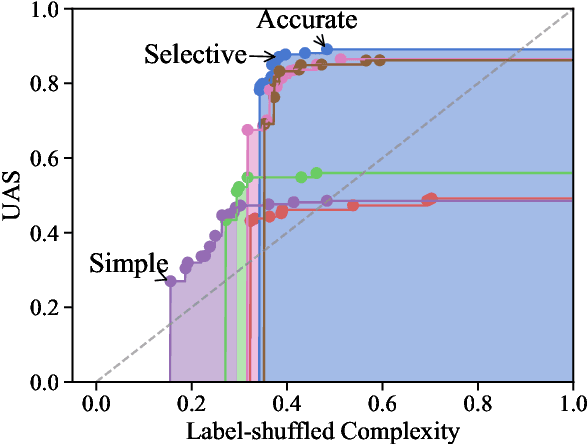
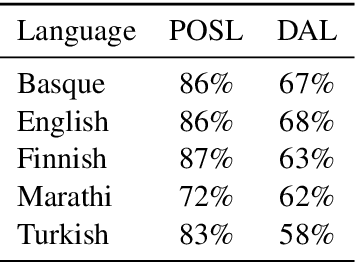
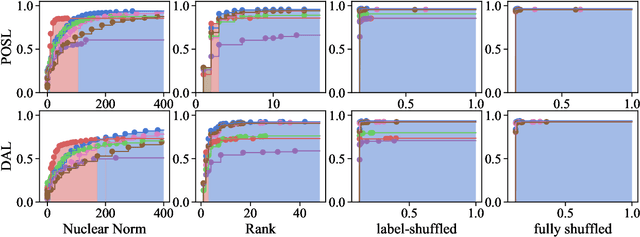

Abstract:The question of how to probe contextual word representations in a way that is principled and useful has seen significant recent attention. In our contribution to this discussion, we argue, first, for a probe metric that reflects the trade-off between probe complexity and performance: the Pareto hypervolume. To measure complexity, we present a number of parametric and non-parametric metrics. Our experiments with such metrics show that probe's performance curves often fail to align with widely accepted rankings between language representations (with, e.g., non-contextual representations outperforming contextual ones). These results lead us to argue, second, that common simplistic probe tasks such as POS labeling and dependency arc labeling, are inadequate to evaluate the properties encoded in contextual word representations. We propose full dependency parsing as an example probe task, and demonstrate it with the Pareto hypervolume. In support of our arguments, the results of this illustrative experiment conform closer to accepted rankings among contextual word representations.
Speakers Fill Lexical Semantic Gaps with Context
Oct 05, 2020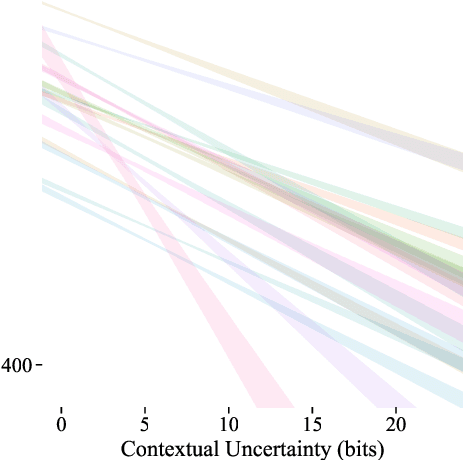
Abstract:Lexical ambiguity is widespread in language, allowing for the reuse of economical word forms and therefore making language more efficient. If ambiguous words cannot be disambiguated from context, however, this gain in efficiency might make language less clear---resulting in frequent miscommunication. For a language to be clear and efficiently encoded, we posit that the lexical ambiguity of a word type should correlate with how much information context provides about it, on average. To investigate whether this is the case, we operationalise the lexical ambiguity of a word as the entropy of meanings it can take, and provide two ways to estimate this---one which requires human annotation (using WordNet), and one which does not (using BERT), making it readily applicable to a large number of languages. We validate these measures by showing that, on six high-resource languages, there are significant Pearson correlations between our BERT-based estimate of ambiguity and the number of synonyms a word has in WordNet (e.g. $\rho = 0.40$ in English). We then test our main hypothesis---that a word's lexical ambiguity should negatively correlate with its contextual uncertainty---and find significant correlations on all 18 typologically diverse languages we analyse. This suggests that, in the presence of ambiguity, speakers compensate by making contexts more informative.
Efficient Computation of Expectations under Spanning Tree Distributions
Sep 02, 2020

Abstract:We give a general framework for inference in spanning tree models. We propose unified algorithms for the important cases of first-order expectations and second-order expectations in edge-factored, non-projective spanning-tree models. Our algorithms exploit a fundamental connection between gradients and expectations, which allows us to derive efficient algorithms. These algorithms are easy to implement, given the prevalence of automatic differentiation software. We motivate the development of our framework with several cautionary tales of previous research, which has developed numerous less-than-optimal algorithms for computing expectations and their gradients. We demonstrate how our framework efficiently computes several quantities with known algorithms, including the expected attachment score, entropy, and generalized expectation criteria. As a bonus, we give algorithms for quantities that are missing in the literature, including the KL divergence. In all cases, our approach matches the efficiency of existing algorithms and, in several cases, reduces the runtime complexity by a factor (or two) of the sentence length. We validate the implementation of our framework through runtime experiments. We find our algorithms are up to 12 and 26 times faster than previous algorithms for computing the Shannon entropy and the gradient of the generalized expectation objective, respectively.
SIGMORPHON 2020 Shared Task 0: Typologically Diverse Morphological Inflection
Jul 14, 2020
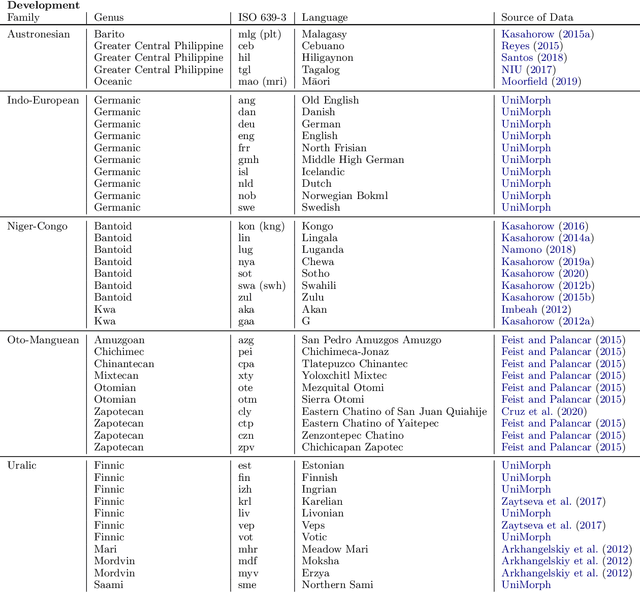
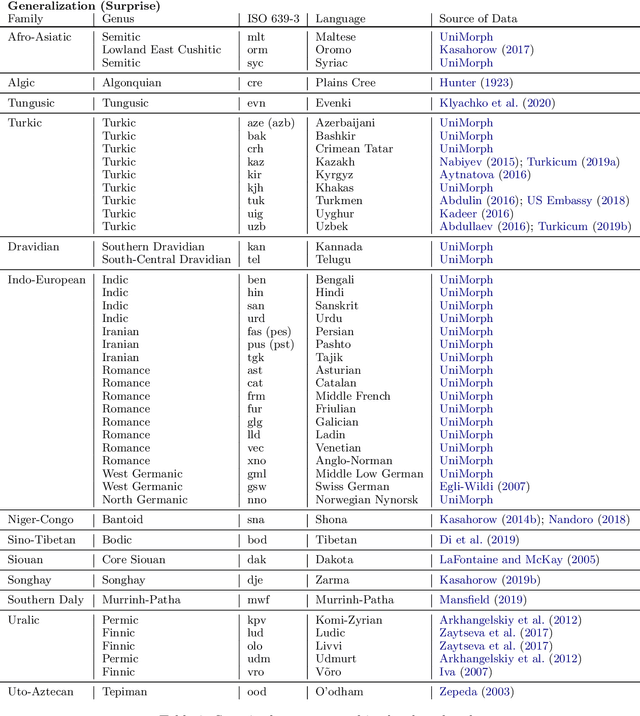
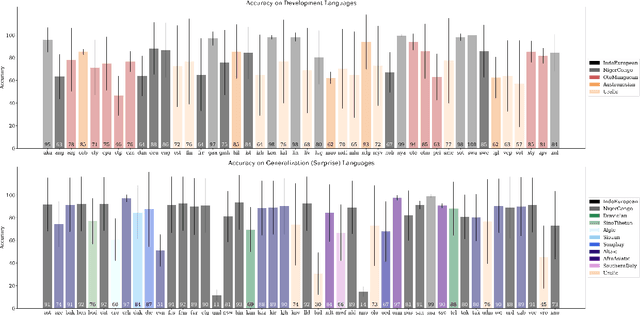
Abstract:A broad goal in natural language processing (NLP) is to develop a system that has the capacity to process any natural language. Most systems, however, are developed using data from just one language such as English. The SIGMORPHON 2020 shared task on morphological reinflection aims to investigate systems' ability to generalize across typologically distinct languages, many of which are low resource. Systems were developed using data from 45 languages and just 5 language families, fine-tuned with data from an additional 45 languages and 10 language families (13 in total), and evaluated on all 90 languages. A total of 22 systems (19 neural) from 10 teams were submitted to the task. All four winning systems were neural (two monolingual transformers and two massively multilingual RNN-based models with gated attention). Most teams demonstrate utility of data hallucination and augmentation, ensembles, and multilingual training for low-resource languages. Non-neural learners and manually designed grammars showed competitive and even superior performance on some languages (such as Ingrian, Tajik, Tagalog, Zarma, Lingala), especially with very limited data. Some language families (Afro-Asiatic, Niger-Congo, Turkic) were relatively easy for most systems and achieved over 90% mean accuracy while others were more challenging.
Best-First Beam Search
Jul 09, 2020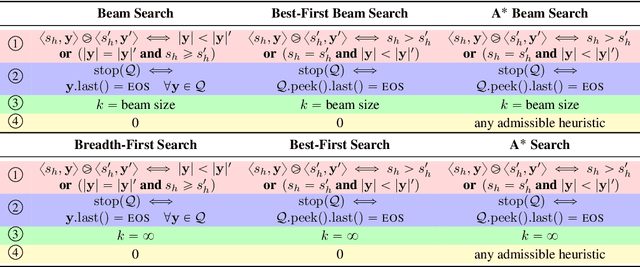
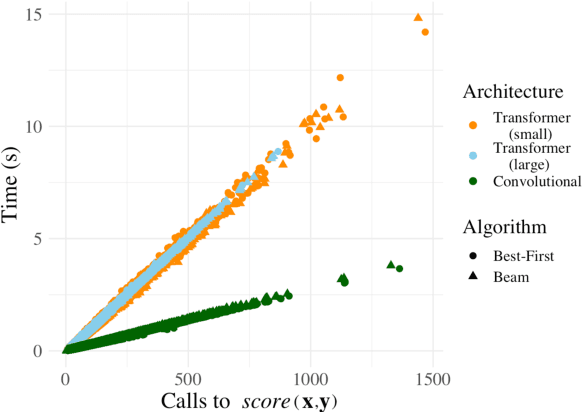

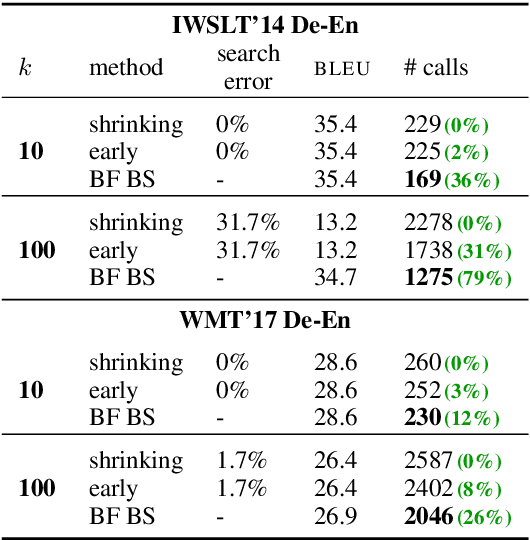
Abstract:Decoding for many NLP tasks requires a heuristic algorithm for approximating exact search since the full search space is often intractable if not simply too large to traverse efficiently. The default algorithm for this job is beam search--a pruned version of breadth-first search--which in practice, returns better results than exact inference due to beneficial search bias. In this work, we show that standard beam search is a computationally inefficient choice for many decoding tasks; specifically, when the scoring function is a monotonic function in sequence length, other search algorithms can be used to reduce the number of calls to the scoring function (e.g., a neural network), which is often the bottleneck computation. We propose best-first beam search, an algorithm that provably returns the same set of results as standard beam search, albeit in the minimum number of scoring function calls to guarantee optimality (modulo beam size). We show that best-first beam search can be used with length normalization and mutual information decoding, among other rescoring functions. Lastly, we propose a memory-reduced variant of best-first beam search, which has a similar search bias in terms of downstream performance, but runs in a fraction of the time.
Predicting Declension Class from Form and Meaning
May 28, 2020


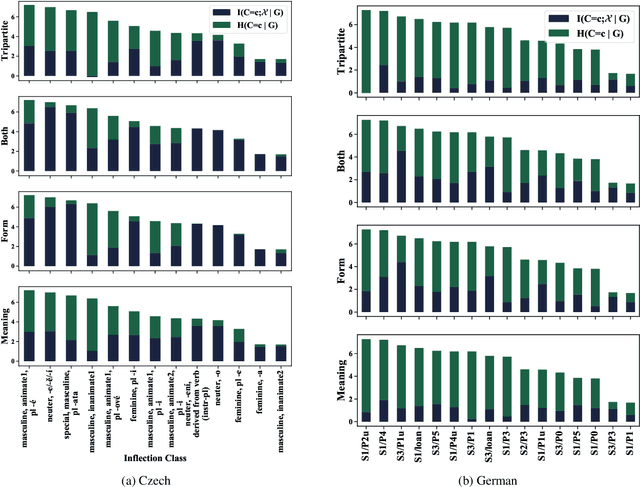
Abstract:The noun lexica of many natural languages are divided into several declension classes with characteristic morphological properties. Class membership is far from deterministic, but the phonological form of a noun and/or its meaning can often provide imperfect clues. Here, we investigate the strength of those clues. More specifically, we operationalize this by measuring how much information, in bits, we can glean about declension class from knowing the form and/or meaning of nouns. We know that form and meaning are often also indicative of grammatical gender---which, as we quantitatively verify, can itself share information with declension class---so we also control for gender. We find for two Indo-European languages (Czech and German) that form and meaning respectively share significant amounts of information with class (and contribute additional information above and beyond gender). The three-way interaction between class, form, and meaning (given gender) is also significant. Our study is important for two reasons: First, we introduce a new method that provides additional quantitative support for a classic linguistic finding that form and meaning are relevant for the classification of nouns into declensions. Secondly, we show not only that individual declensions classes vary in the strength of their clues within a language, but also that these variations themselves vary across languages.
A Corpus for Large-Scale Phonetic Typology
May 28, 2020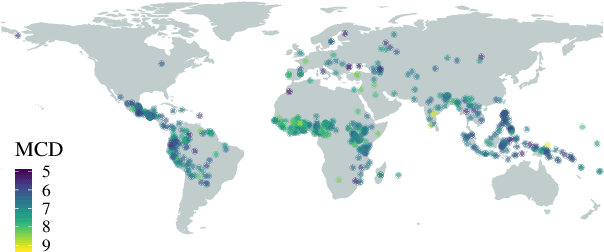

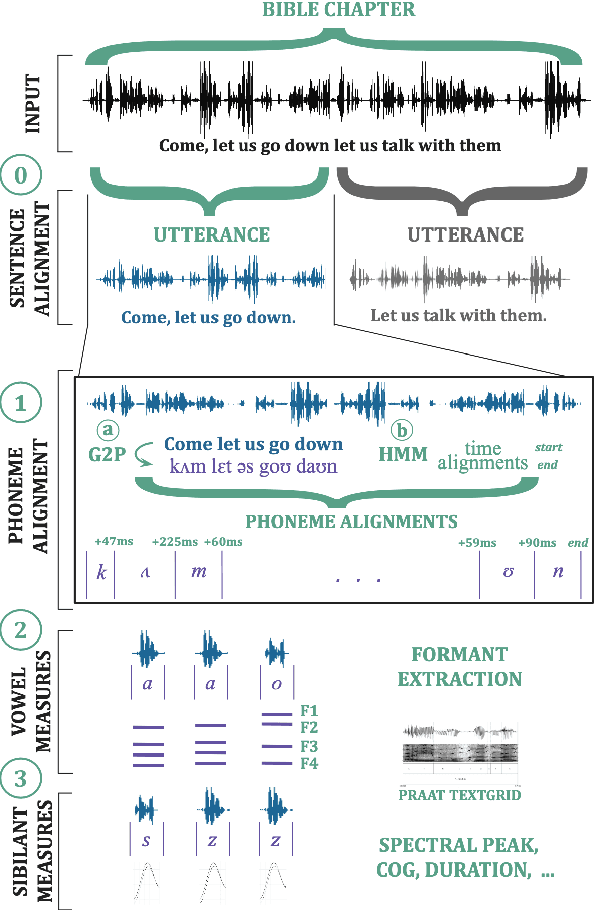
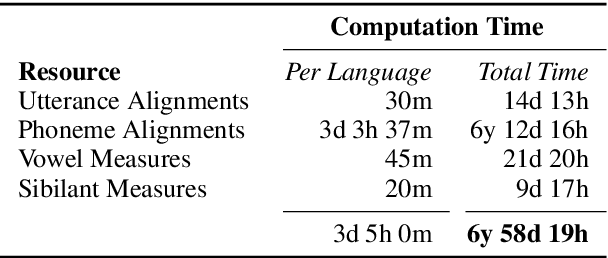
Abstract:A major hurdle in data-driven research on typology is having sufficient data in many languages to draw meaningful conclusions. We present VoxClamantis v1.0, the first large-scale corpus for phonetic typology, with aligned segments and estimated phoneme-level labels in 690 readings spanning 635 languages, along with acoustic-phonetic measures of vowels and sibilants. Access to such data can greatly facilitate investigation of phonetic typology at a large scale and across many languages. However, it is non-trivial and computationally intensive to obtain such alignments for hundreds of languages, many of which have few to no resources presently available. We describe the methodology to create our corpus, discuss caveats with current methods and their impact on the utility of this data, and illustrate possible research directions through a series of case studies on the 48 highest-quality readings. Our corpus and scripts are publicly available for non-commercial use at https://voxclamantisproject.github.io.
Applying the Transformer to Character-level Transduction
May 20, 2020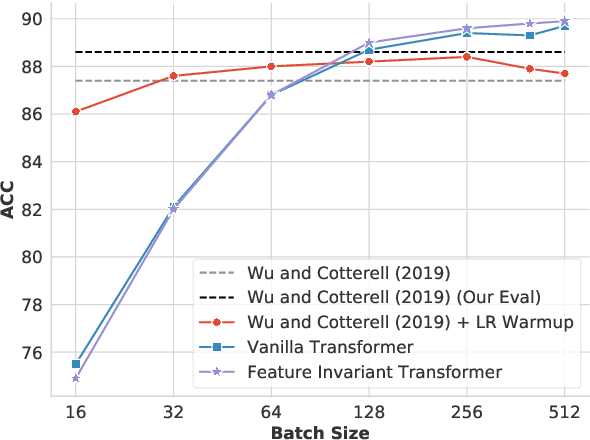
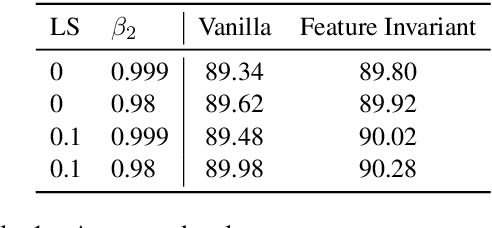

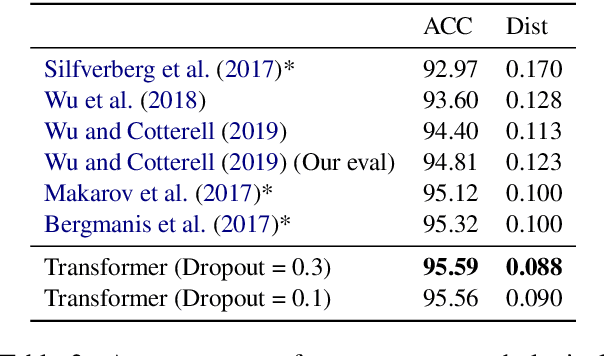
Abstract:The transformer has been shown to outperform recurrent neural network-based sequence-to-sequence models in various word-level NLP tasks. The model offers other benefits as well: It trains faster and has fewer parameters. Yet for character-level transduction tasks, e.g. morphological inflection generation and historical text normalization, few shows success on outperforming recurrent models with the transformer. In an empirical study, we uncover that, in contrast to recurrent sequence-to-sequence models, the batch size plays a crucial role in the performance of the transformer on character-level tasks, and we show that with a large enough batch size, the transformer does indeed outperform recurrent models. We also introduce a simple technique to handle feature-guided character-level transduction that further improves performance. With these insights, we achieve state-of-the-art performance on morphological inflection and historical text normalization. We also show that the transformer outperforms a strong baseline on two other character-level transduction tasks: grapheme-to-phoneme conversion and transliteration. Code is available at https://github.com/shijie-wu/neural-transducer.
It's Easier to Translate out of English than into it: Measuring Neural Translation Difficulty by Cross-Mutual Information
May 17, 2020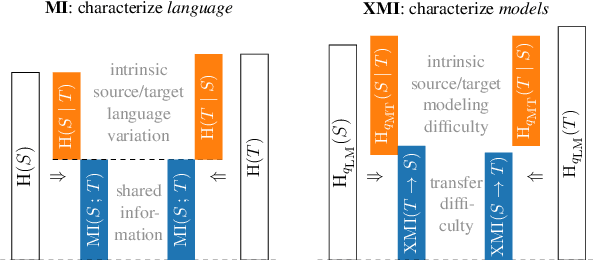


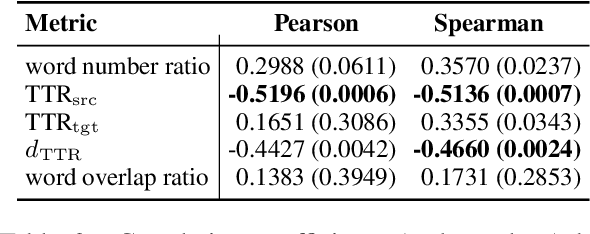
Abstract:The performance of neural machine translation systems is commonly evaluated in terms of BLEU. However, due to its reliance on target language properties and generation, the BLEU metric does not allow an assessment of which translation directions are more difficult to model. In this paper, we propose cross-mutual information (XMI): an asymmetric information-theoretic metric of machine translation difficulty that exploits the probabilistic nature of most neural machine translation models. XMI allows us to better evaluate the difficulty of translating text into the target language while controlling for the difficulty of the target-side generation component independent of the translation task. We then present the first systematic and controlled study of cross-lingual translation difficulties using modern neural translation systems. Code for replicating our experiments is available online at https://github.com/e-bug/nmt-difficulty.
A Tale of a Probe and a Parser
May 12, 2020
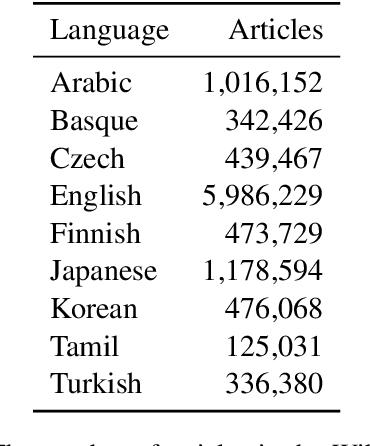
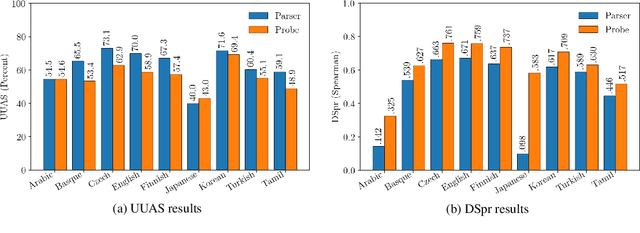
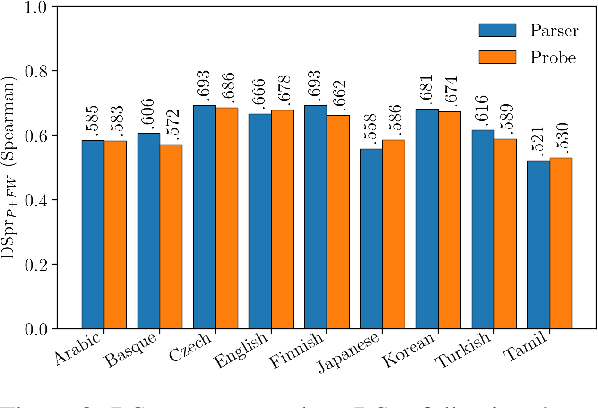
Abstract:Measuring what linguistic information is encoded in neural models of language has become popular in NLP. Researchers approach this enterprise by training "probes" - supervised models designed to extract linguistic structure from another model's output. One such probe is the structural probe (Hewitt and Manning, 2019), designed to quantify the extent to which syntactic information is encoded in contextualised word representations. The structural probe has a novel design, unattested in the parsing literature, the precise benefit of which is not immediately obvious. To explore whether syntactic probes would do better to make use of existing techniques, we compare the structural probe to a more traditional parser with an identical lightweight parameterisation. The parser outperforms structural probe on UUAS in seven of nine analysed languages, often by a substantial amount (e.g. by 11.1 points in English). Under a second less common metric, however, there is the opposite trend - the structural probe outperforms the parser. This begs the question: which metric should we prefer?
 Add to Chrome
Add to Chrome Add to Firefox
Add to Firefox Add to Edge
Add to Edge